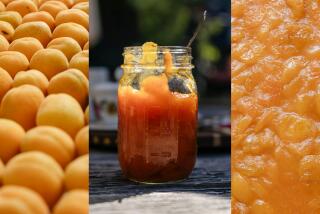Melons: How to choose, store and prepare
If any fruit captures the sweet, dripping heart of summer, it’s a good melon. There are two main families of melons: those with rough, netted or reticulated rinds (muskmelons, cantaloupes, etc.) and those whose rinds are baby-smooth (such as honeydew). The difference has nothing to do with color: There are orange-fleshed honeydews and green-fleshed cantaloupes (such as the Galia variety). Netted melons tend to have a slightly buttery texture and a flavor that tends much more toward the musky (hence the name). Smooth melons such as honeydew will have crisp texture and a very floral flavor.
How to choose: With netted melons, the best indicator is smell; they should have intense perfume. Also, the net should be raised and the rind underneath it should be tan to golden, not green. These melons “slip” from their stems when they are ripe, so their bellybuttons will be clean. The honeydew family is harder to choose (it is called “inodorous” for its lack of perfume). The best clue is color -- it should be rich and creamy. The rind will also feel almost waxy. If you find a melon that has freckles, buy it -- those are sugar spots.
How to store: Melons will continue to ripen after they’ve been harvested as long as you store them at room temperature. If you like melons chilled, refrigerate them overnight. Much longer than that and they can start to develop soft spots and pitting.
How to prepare: Melons taste wonderful just as they are. If you want a surprise, sprinkle a cantaloupe with salt and a little black pepper; the combination is amazing. Or you cube them or slice them first? can wrap them in prosciutto and skewer with a toothpick for an easy appetizer.
More to Read
Sign up for our L.A. Times Plants newsletter
At the start of each month, get a roundup of upcoming plant-related activities and events in Southern California, along with links to tips and articles you may have missed.
You may occasionally receive promotional content from the Los Angeles Times.






